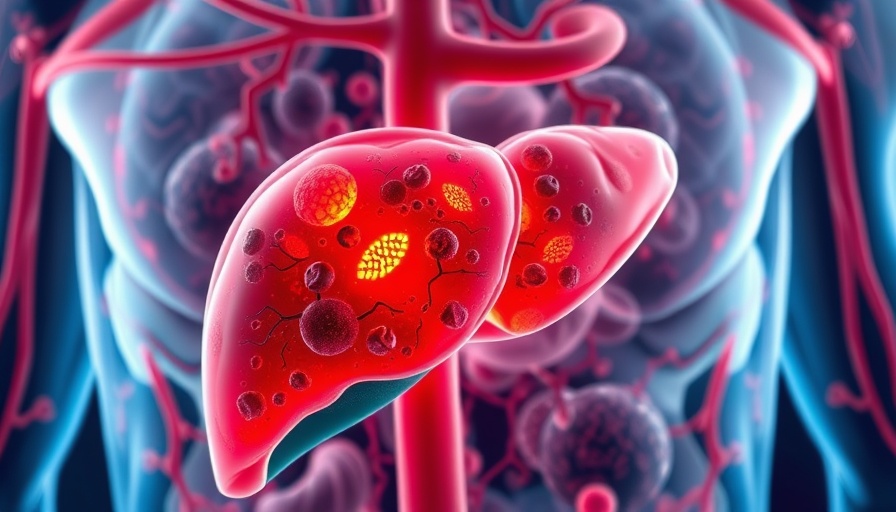
Innovative Findings: The Promise of FGF21 in Combating Fatty Liver Disease
A recent groundbreaking study published in Cell Metabolism unveils a promising new avenue in the fight against fatty liver disease, specifically focusing on a hormone called FGF21 (fibroblast growth factor 21). Conducted by researchers at the University of Oklahoma, this study reveals how FGF21 can not only halt but also reverse the severe consequences of fatty liver disease in animal models, which might lead to significant advancements in human treatment. As the prevalence of fatty liver disease—also referred to as MASLD (metabolic dysfunction-associated steatotic liver disease)—continues to rise globally, affecting nearly 40% of the population, these findings are particularly relevant.
How FGF21 Operates: Messaging from the Brain
What makes FGF21 remarkable is its method of action. Unlike traditional treatments that target liver metabolism directly, FGF21 first sends signals to the brain, which in turn activates nerve responses that benefit the liver's functioning. This unique approach emphasizes the intricate connection between brain signals and liver health, highlighting a sophisticated feedback loop where the brain plays a dominant role. According to Dr. Matthew Potthoff, the lead researcher, "the majority of the effect comes from the signal to the brain rather than the liver directly, but together, the two signals can effectively regulate various types of lipids in the liver.” This discovery not only clarifies how FGF21 works but opens the door to targeted therapies that could enhance liver health significantly.
Implications for Treatment: A Shift Toward Targeted Therapies
The clinical implications of these findings are far-reaching. With only one FDA-approved treatment for the advanced stages of fatty liver disease, the need for innovative solutions is critical. Notably, trials of new medications that utilize FGF21 signaling are already in Phase 3 clinical assessments, suggesting a potential treatment breakthrough is on the horizon. As the research progresses, it’s likely that these insights into FGF21 will help develop more effective strategies for managing not just fatty liver disease but potentially other metabolic disorders as well.
Fatty Liver Disease and Its Grave Implications
Fatty liver disease can progress to more severe conditions, such as MASH (metabolic dysfunction-associated steatohepatitis), which involves inflammation and fibrosis that can ultimately lead to cirrhosis. The gravity of this disease illustrates the urgency of finding effective treatments, especially in a world where lifestyle diseases are on the rise. Given the support for FGF21's therapeutic potential, these findings inspire hope for improved quality of life for millions worldwide.
Connecting the Dots: Health, Wellness, and Disease Prevention
The revelation of how FGF21 operates mirrors a broader theme in today’s health landscape—understanding that body functions are interconnected. Emphasizing a holistic approach to health, it’s critical for individuals, particularly in health-conscious communities like San Antonio, to remain vigilant about lifestyle choices that can contribute to fatty liver disease and pursue proactive health measures. This includes engaging in regular physical activity, maintaining a healthy diet filled with natural foods, and participating in local health and wellness programs that promote better living.
Conclusion: A Call to Action for Health and Wellness
As advancements like the discovery of FGF21 offer hope in combatting chronic health issues, it inspires us to take charge of our health. Individuals are encouraged to explore local health and wellness resources as part of their journey to optimal health. Whether it's through community educational events, wellness centers, or simply advocating for oneself and loved ones, taking action today sets a foundation for a healthier future. Embracing natural and proactive strategies is essential for mitigating health risks and enhancing overall well-being.
 Add Row
Add Row  Add
Add 




 Add Row
Add Row  Add
Add 


Write A Comment